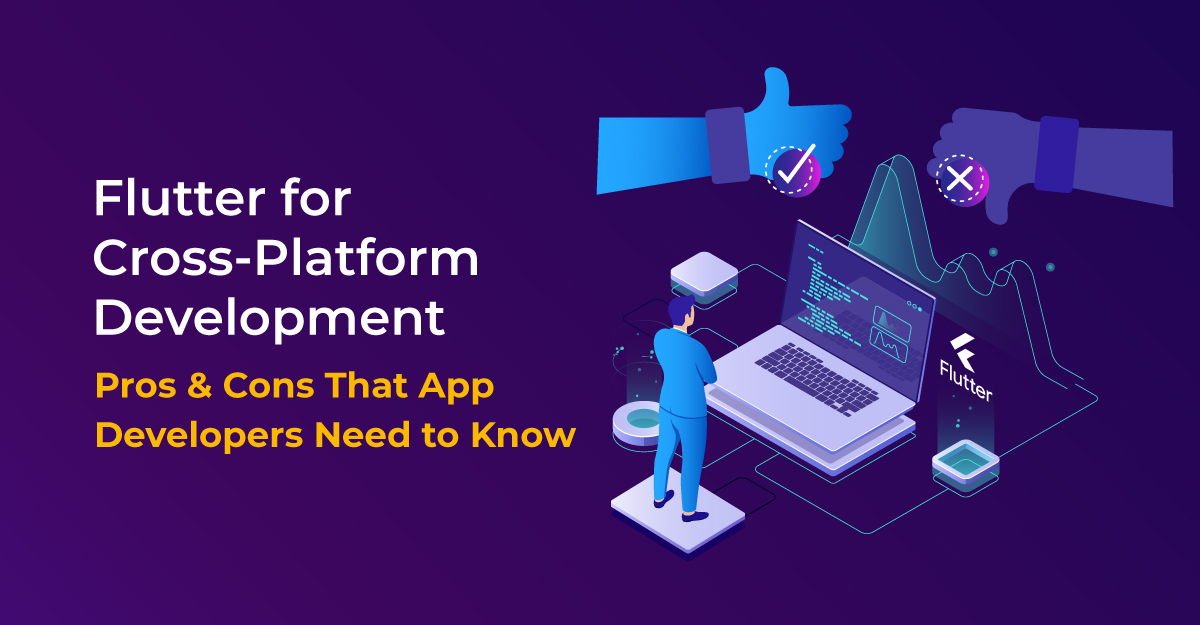Mobile app development is a relatively new career option. With the increase in different types of smartphones, the development of apps for platforms like iOS and Android got more expensive and time-consuming. Therefore, there is a need to make apps that can be installed and used on multiple platforms. This is why mobile development on cross-platform like Flutter is the new way of developing mobile apps.
Flutter: An introduction
Flutter is an open-source SDK based on object-oriented programming language, Dart. It was developed by Google to create mobile apps for multiple platforms like Android and iOS. A Flutter app development company can create apps using the same code base for both Android and iOS.
The kit comes with several development tools, widgets, and frameworks, leading to a better app development experience. Some of the companies that use Flutter include,
- Google (for Fuschia and Google Ads)
- Alibaba
- Tencent
Flutter: Important Facts
- The latest Flutter update includes support for building Chrome OS applications
- Flutter mobile app development uses enriched UI elements that follow particular guidelines
- Flutter uses a C++ rendering
- Highly customized and fast widgets
- Flutter’s architecture is based on reactive programming.
Flutter: Pros and Cons
Pros of Flutter
Simultaneous development of iOS and Android apps
Flutter uses the same code base to create Android and iOS apps. There’s no need to create two separate programs with the same mechanism. Apps developed through Flutter mobile app development are equally effective on Google and Apple platforms and useless coding than native apps.
Faster prototyping and lesser coding
One of the features of Flutter is the hot reload feature. The hot reload feature can perceive any changes made to the code in real-time, and there is no need to restart the app. Since the widget app is automatically built by Flutter, the hot reload function becomes extremely fast. Therefore, the entire process is improved. Moreover, the programming style in Flutter is reactive. It doesn’t need JavaScript, which increases the overall performance of the app.
Suitable for MVP
Apps can be developed quickly with Flutter as programmers don’t have to create separate codes for iOS and Android apps. This will allow software companies to show the final look for the MVP to their investors to bag the funding.
Widgets
Flutter comes with a set of widgets as a unified model, unlike other frameworks. This can help you create widgets that are easily customizable, extensible, and fast.
Cons of Flutter
Limitations in third-party libraries and use
Flutter is a relatively new mobile app developer. The framework, therefore, is completely new. These libraries are mainly open-source, freely available, and open tested. Flutter’s libraries are still growing and have certain limitations, unlike native-based mobile app developers. Moreover, the SDK is only used for developing mobile-based apps and doesn’t support web browsers, limiting an app’s use.
File size and stability
The apps developed through Flutter are larger than 4 MB. This could be harmful to companies looking for small compact-sized apps. Moreover, as mentioned before, the SDK is new, making it unstable. Some developers believe Flutter needs more upgrades before it can handle eCommerce apps.
Flutter is a great framework for cross-platform development. It can speed up the development process by allowing developers to use the same code base for both Android and iOS. However, it is not without its faults. Being a new SDK, it is unstable and has limited use and libraries. The pros definitely overshadow the cons for the most part. However, the final choice regarding Flutter mobile app development depends on the company’s goals.



